We said our goodbyes to our Azamara crew, especially to Owen, our bartender in the Discoveries Restaurant lounge who took such good care of us every night. And I thanked Eric de Gray, the cruise director, who was bidding everyone farewell as we disembarked. I asked him, referring to the job of cruise director, if he was having fun. He told me he felt very fortunate to be doing something he liked so well, and I believed he was sincere. He’s good at it, and very talented. And he can’t take himself too seriously if he’s OK dressing in the crazy costumes, doing the comedy shtick, and leading a conga line of mostly seniors around the top deck of a cruise ship. Azamara is lucky to have him.
Click on image to view full size
We had contracted with Miles and Miles for a driver to our hotel in Rome, and for a Vatican tour later that day. Our driver, another Marco, was again informative and genial, and quite droll. I have some great quotes from him. Driving in Rome is a unique experience.
Rome was settled, not planned, and the paths that were eventually paved are not necessarily wide or well marked. Couple that with cars of all sizes, from Smartcars to SUVs, construction vehicles to Vespas, and you have the Wild, Wild West, especially since, as Marco said, “Traffic lights and lanes, they are just suggestions.”
We’d been polling all of our guides and drivers on their olive oil consumption, and the discussion of this year’s poor crop arose. Marco enlightened us that the rainy summer had washed all of the pesticides from the olive trees, and a caused a blight on the olives. He also told us that the vintners plant rose bushes in the vineyards, sort of like canaries in coal mines. Roses will catch diseases that affect grapevines, which gives the vintners time to treat the vines. Interesting.
It was also interesting to see graffiti on buildings when we got closer in to the city center. Some kid in New Bedford tags an underpass and my feeling is he should be arrested, fined, and made to clean it up. I don’t care how artistic he thinks he is. Or political. Some kid tags a building built in the 1400’s he ought to be drawn and quartered. IMHO, anyway. Marco agreed. “The mother of the idiot, she is always pregnant,” was his response.
Marco delivered us to the Ambasciatori Palace on Via Venuto in Rome. It’s a street of upscale hotels with the American Embassy about half way down, Piazza Barberini at the bottom, and Il Convento dei Cappuccini (the Capuchin Crypts) in the middle. It was certainly not central in Rome, but was a beautiful hotel in a great area and I was happy for the amount of walking we did because of the location.
Click on image to view full size
Speaking of walking, we were to meet out Vatican tour guide at the Vatican, so we had a bit of a hike to get there. And as we were continually told that Rome is a museum without walls, there was a lot to see along the way.
Our walk took us through Piazza Barberini and across to the Spanish Steps, then through some very expensive retail territory, like Prada, Valentino, and Gucci expensive. From there we sauntered through the Piazza del Papolo, across the Tiber on the Ponte Regina Margherita, and straight on until we came to the Vatican walls.
Click on image to view full size
Our guide, Federica Dal Palù, is a beautiful, vivacious art historian who has an impressive C.V. and degrees in art preservation as well as history. She is a guide, a teacher, and even writes audio guides for art exhibits. She knows her material well, and is enthusiastic to share it.
Federica met us outside the Vatican, and ushered us in through an entrance for groups allowing us to avoid the long lines. This was a huge benefit to all the tours, being able to forgo the lines with pre-purchased tickets and separate entrances. Silence is expected in the Sistine Chapel, so no guides are allowed to explain what their clients are seeing in real time. Federica took us aside to benches outside of the entrance to the Vatican Museum to educate us on the ceiling and the Last Judgement wall. Her illustrated lecture was incredibly helpful, as there is so much to see, but more on the Sistine Chapel later.
In mid lecture another guide had ushered in a couple of tourists and was speaking, at least to Federica, too loudly. She turned and gave him a whole ration of grief, albeit with a smile, twice. Our Federica is not to be trifled with, and nothing was going to get in the way of an excellent tour. We were all amused.
Next she led us into the Vatican Museum, which Federica described as a “fruit salad”. Why? Because of the mishmash of it’s contents. There were antiquities from Egypt, Greece and of course Rome, animal statues, tapestries, granite mausoleums, old maps and lots of broken penises. There is a story that Pope Pius IX in a conservative streak once ran through the Vatican at night with a hammer and chisel cutting penises off of statues. Somebody had issues…
There were galleries with what looked to be carved ceilings that were actually optical illusions and were quite flat. There were tapestries so rich in color and detail, and so large we couldn’t imagine someone drawing it full size, like 16’ x 20’ full size. Raphael was bloody amazing.
There was the Belvedere Torso, the astonishing rock sculpted by an ancient that Michelangelo felt was the epitome of perfection of the male form; he copied the musculature of the statue in his painting of Christ in The Last Judgement.
There were the maps of Ignazio Danti, based upon travelers’ descriptions of Italy (at the time the Papal States) that are incredibly accurate. And all this before we even get to the Sistine Chapel. The thing that struck me was the ego of the Popes who had gone on an antiquities grab, amassing any and all they could get their hands on to celebrate their own lives, intimidating artists into painting and sculpting for them, all looking to outdo the ones who came before. The Vatican symbol is two crossed keys, one spiritual and one political. Methinks the political key was bigger in the Middle Ages and Renaissance.
Click on image to view full size
The Sistine Chapel was not what I expected. The size, which is the same size as the Temple of Solomon in Jerusalem, is smaller than I pictured. And for all the amazing artwork on the ceiling and the walls it seems very dark. The ceiling’s story of Genesis with the prophets and the ancestors added in for good measure is astounding, and seems also to be about Michelangelo’s beef with the Pope. His painting of the creation is interesting on so many levels and beautiful from an artistic perspective, seemingly making a humanist statement by having God represented in what looks to be a human brain. And Michelangelo’s painting of God making the moon, the sun and the stars is his obvious commentary on how he felt about Pope Julius. It was the original mooning.
The Last Judgement was painted 23 years later and is very different. It is much darker with Christ serving a harsh justice. No one is smiling, not even those whose souls have been saved. Mary is cowering under Christ’s right arm. Michelangelo’s self portrait is in evidence as the face in the skin of St. Bartholomew, who was skinned alive and holds his flesh in the painting. Very dark. And don’t cross Michelangelo, he gets even in spectacular fashion. When the Pope’s own Master of Ceremonies Biagio da Cesena said of the painting “it was mostly disgraceful that in so sacred a place there should have been depicted all those nude figures, exposing themselves so shamefully,” and that it was no work for a papal chapel but rather “for the public baths and taverns,” Michelangelo worked Cesena’s face into the scene as Minos, judge of the underworld (far bottom-right corner of the painting) with Donkey ears (you can guess what that means), while his nudity is covered by a coiled snake. It is said that when Cesena complained to the Pope, the pontiff joked that his jurisdiction did not extend to hell, so the portrait would have to remain. And Michelangelo is still getting even almost 500 years later.
Click on image to view full size
Seeing the chapel in a throng of tourists packed together like sardines is inevitable, and unfortunate. I could imagine 120 Cardinals present during a conclave would feel crowded and they’d want to get the job done pronto. But our reward is getting to now see St. Peter’s Basilica.
How to describe the dome, the Pieta, the Holy Door, the tombs of the Popes, the Mosaics that replicate the original paintings (which were moved to museums so as not to be damaged by smoke and incense), Bernini’s Dove Window and more? I can’t, and my photos don’t do them justice.
Click on image to view full size
One thing touched me; we were told that Pope Francis prays in the chapel in the tombs; a humble man praying in humble surroundings. The Vatican is testimony to the wealth of the church; perhaps this humble man can put it to better use.
Let us pray.

Tomorrow take a driving tour of Rome with us!




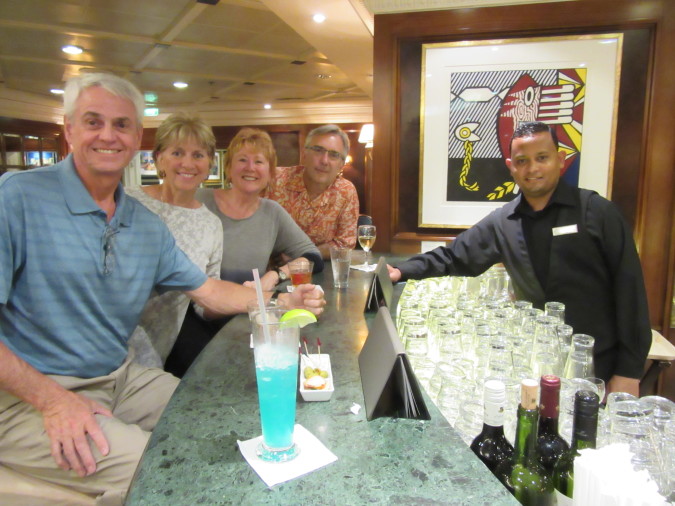
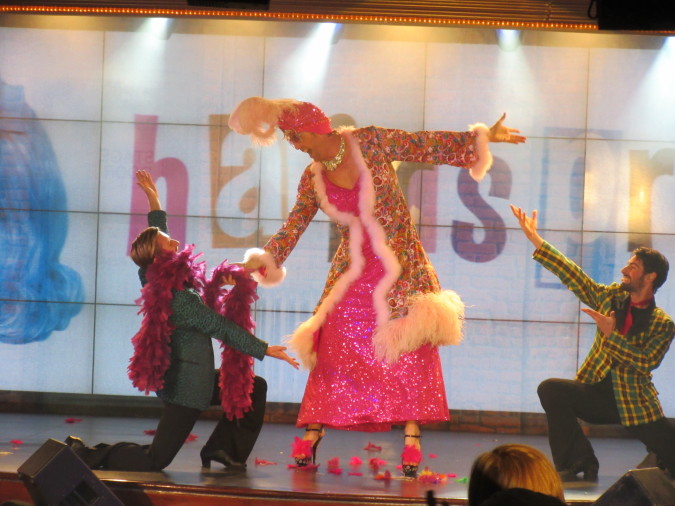


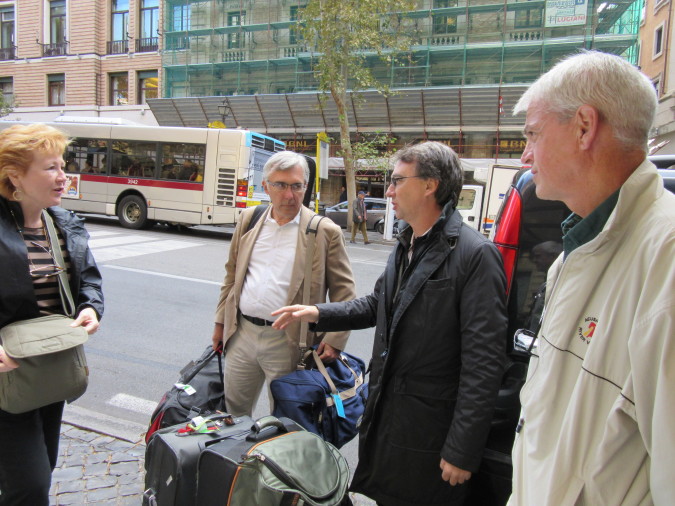
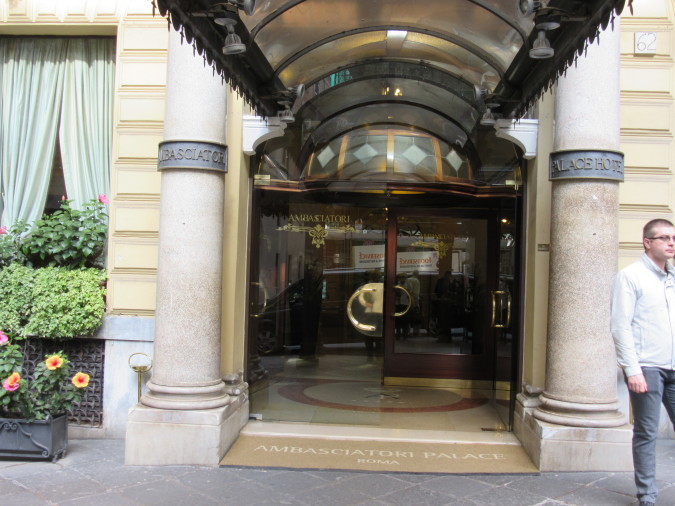




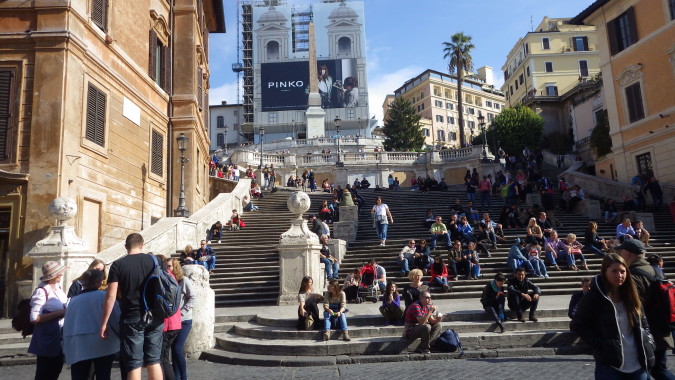
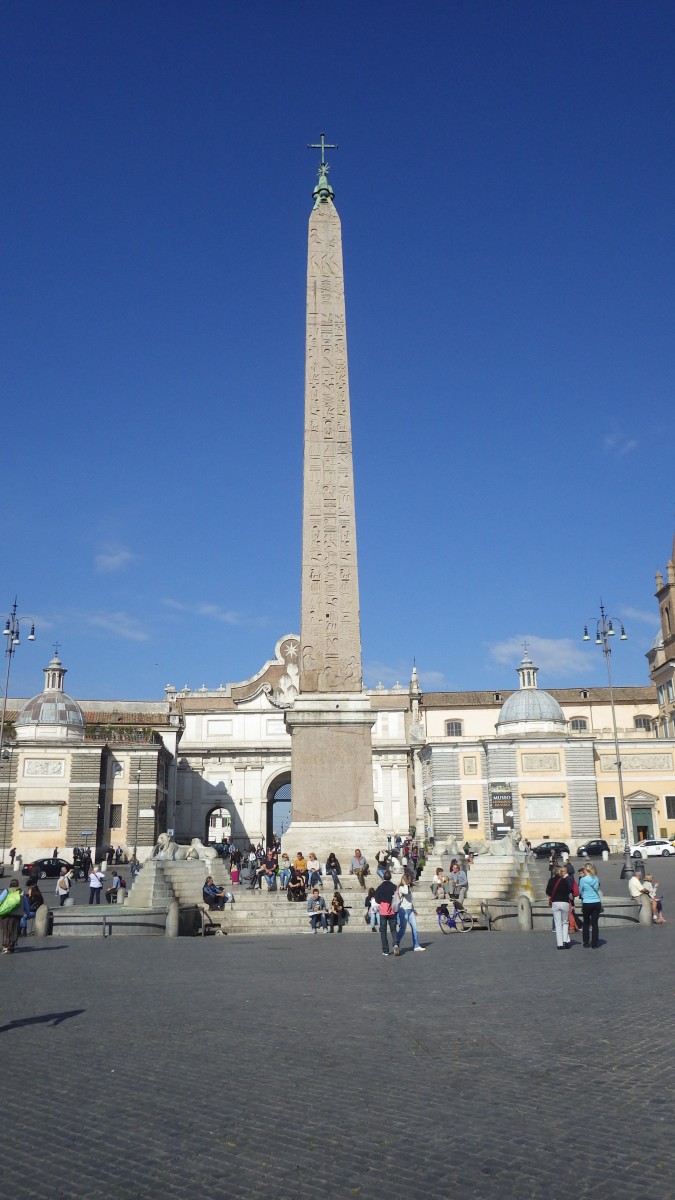






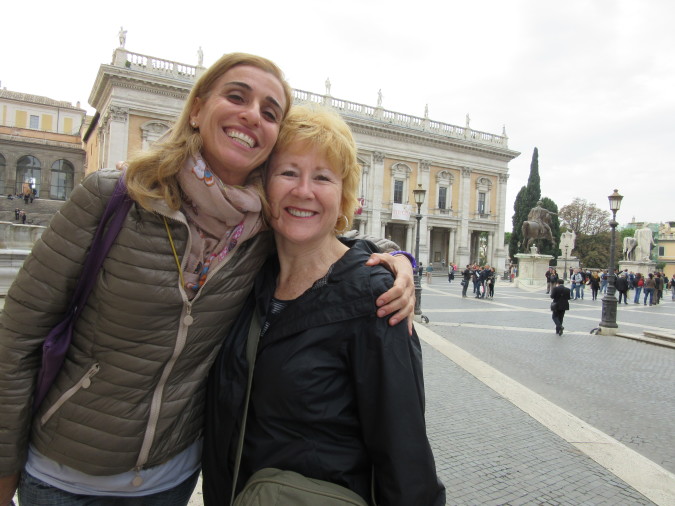
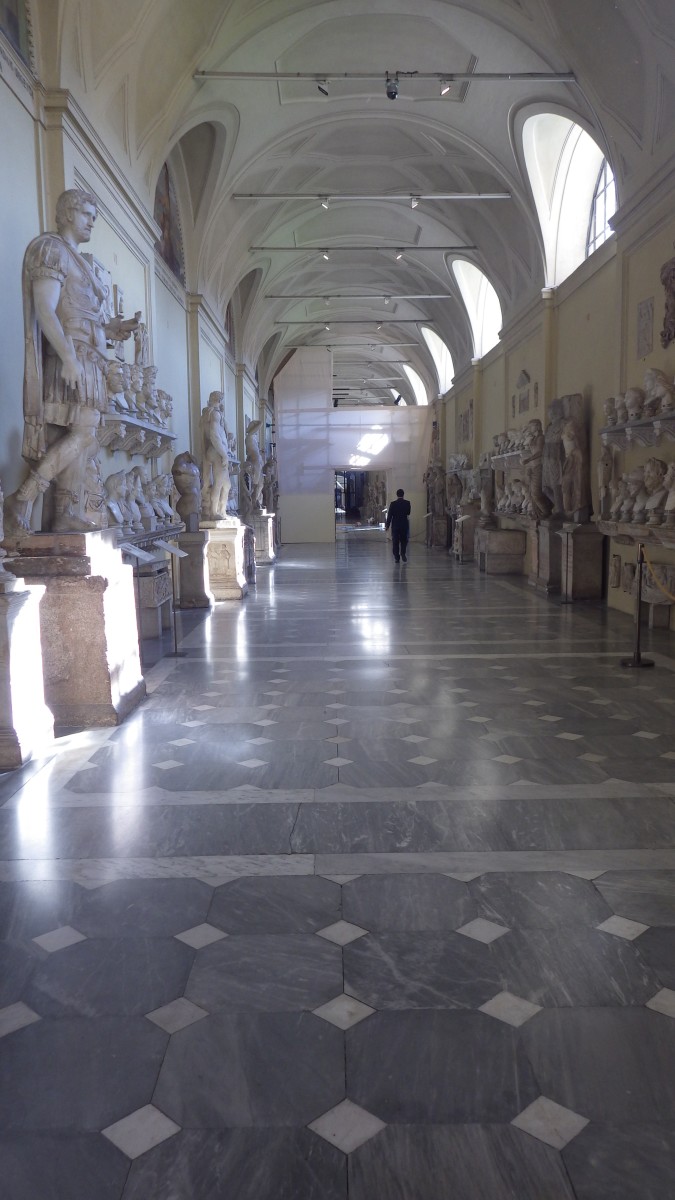




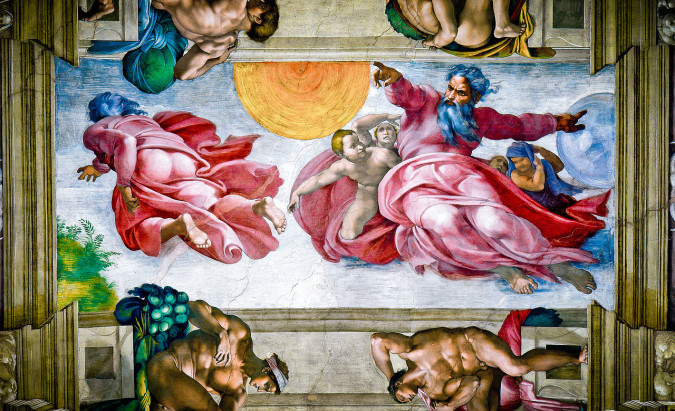











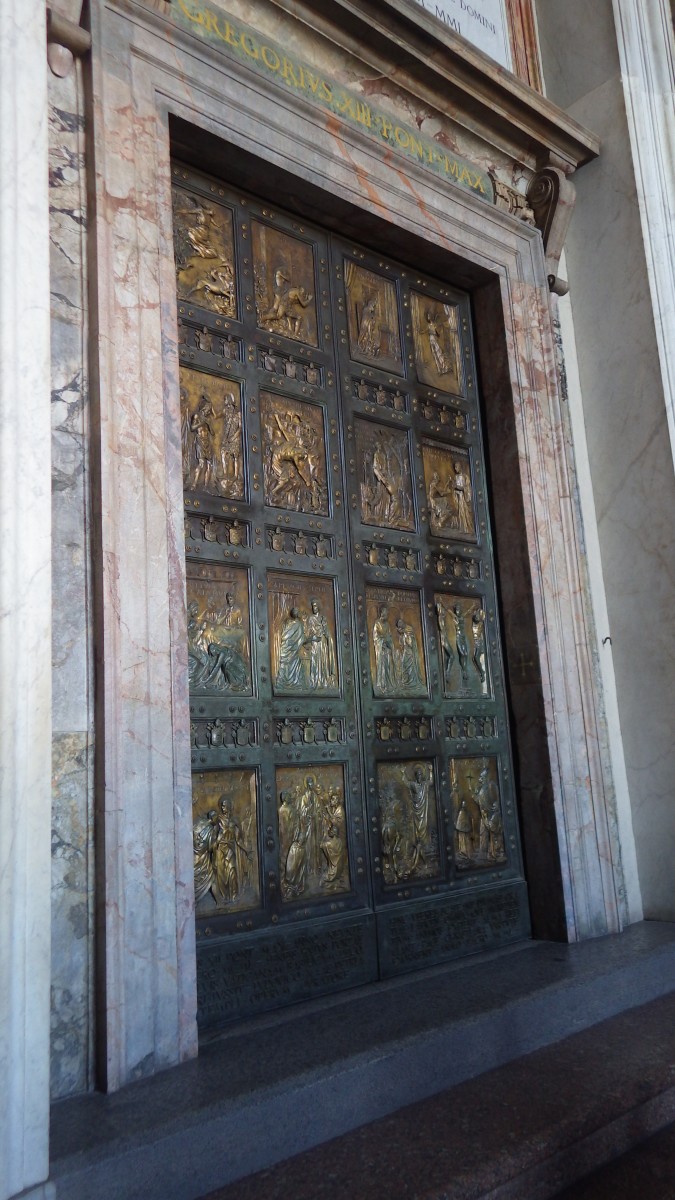
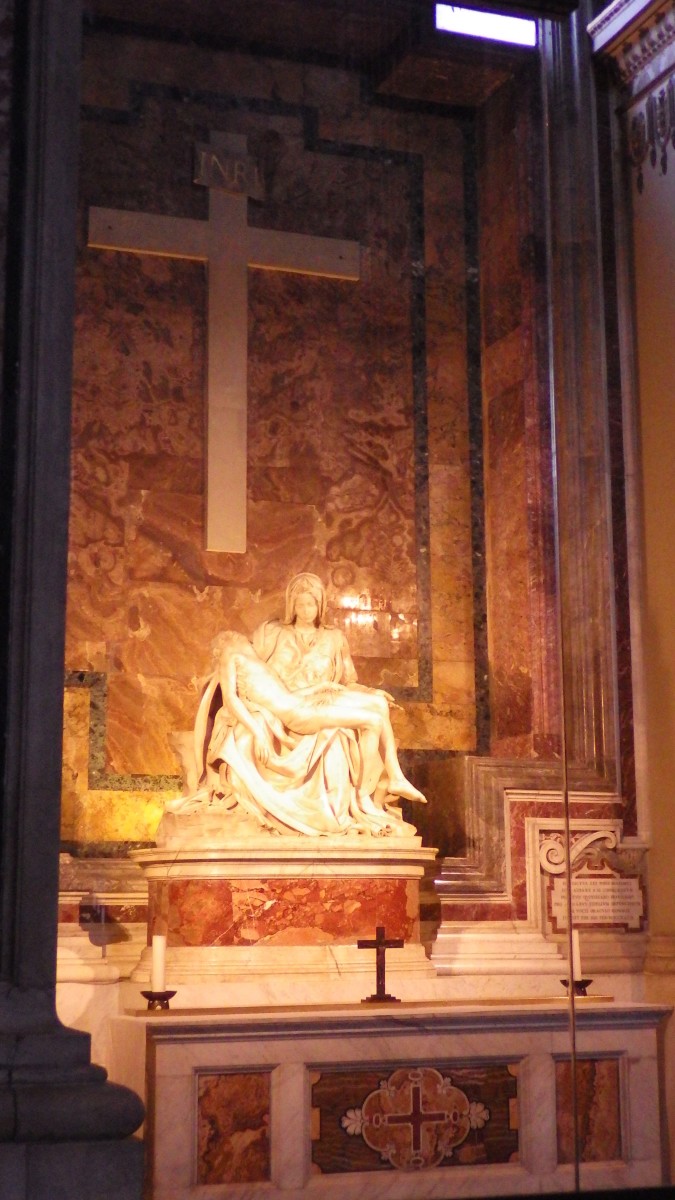
Wow Deb, i just can’t believe how crowded everything was, even in October. The last time I was inside the Vatican was the late 70’s and it was much less busy, and it was early June. (I was back in Rome ten years ago, but not to the Vatican again.) Italy is just a victim of its own success. But I’m glad you saw all that you saw – almost sensory overload to try to absorb it all, and were as always blessed with terrific guides. Such a grace note to end on, as well, your comment on Francis.